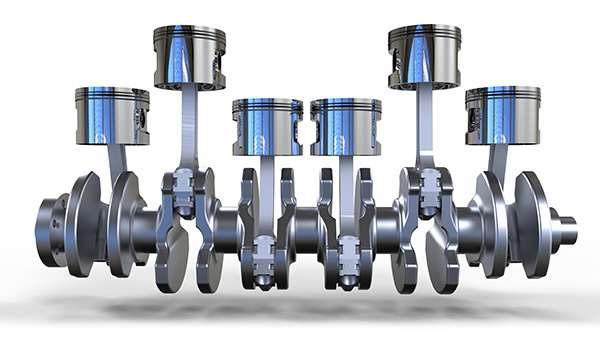
Ever wondered how your car’s engine transforms fuel into motion? It all comes down to the marvel of the four-stroke engine. This reliable powerhouse is the beating heart of most vehicles, silently working behind the scenes to get you from point A to point B. But how does it actually function? Let’s break it down step by step to understand the magic that happens under your hood.
The Basics of a Four-Stroke Engine
At its core, a four-stroke engine is an internal combustion engine. This means it relies on controlled explosions of fuel and air to create energy. The term "four-stroke" refers to the four distinct phases—or strokes—of the engine's operation: intake, compression, power, and exhaust. Each stroke plays a critical role in keeping your engine running smoothly and efficiently.
This system is housed within the engine cylinders, where pistons move up and down to create the necessary mechanical energy. These pistons, along with other components like the crankshaft, camshaft, and valves, work in perfect harmony to ensure your car performs at its best.
Step 1: The Intake Stroke
The first phase begins when the intake valve opens. As the piston moves downward within the cylinder, it creates a vacuum that draws in a mixture of air and fuel. This combination is precisely calibrated to ensure optimal combustion.
Think of the intake stroke as your engine takes a deep breath—it’s gathering everything it needs to ignite the next step. The key here is timing; the intake valve must open and close at just the right moment for the process to be effective.
Step 2: The Compression Stroke
Once the air and fuel mixture is inside the cylinder, the intake valve closes, and the piston moves upward. This compresses the mixture into a smaller space, which increases its pressure and temperature.
Compression is vital because it prepares the mixture for combustion. The higher the compression, the more energy the engine can generate. However, if compression isn’t balanced correctly, it can lead to problems like knocking or loss of power.
Step 3: The Power Stroke
Here’s where the real action happens. With the mixture fully compressed, the spark plug ignites it, creating a controlled explosion. This sudden burst of energy forces the piston downward, converting chemical energy into mechanical energy.
The power stroke is what generates the force needed to turn the crankshaft, which ultimately powers your car’s wheels. This is the moment all the previous strokes were building up to—it’s the reason your car moves forward.
Step 4: The Exhaust Stroke
After the power stroke, there’s one final step to complete the cycle. The exhaust valve opens, and the piston moves back upward, pushing the leftover gases from combustion out of the cylinder. These gases are then expelled through the exhaust system, making way for the process to start all over again.
The exhaust stroke ensures your engine stays clean and ready for the next cycle. Without it, those leftover gases would build up and hinder the engine’s performance.
Why the Four-Stroke Engine is a Game Changer
The four-stroke design is incredibly efficient and reliable, making it the standard choice for most modern vehicles. Each stroke serves a specific purpose, and together, they create a seamless process that maximizes power while minimizing waste.
This engine type is also more environmentally friendly than older two-stroke engines, which tend to produce more emissions. With advancements in technology, today’s four-stroke engines are designed to deliver better fuel economy and lower environmental impact without sacrificing performance.
Common Issues and How to Prevent Them
While four-stroke engines are built to last, they’re not immune to wear and tear. Neglecting regular maintenance can lead to problems like reduced fuel efficiency, misfires, or even engine failure.
To keep your engine in top shape, make sure to follow these basic tips:
- Stick to a consistent oil change schedule. Clean oil is essential for lubrication and cooling.
- Pay attention to unusual noises or warning lights. These can indicate issues with components like the spark plugs or valves.
- Schedule regular inspections to catch potential problems before they escalate.
If you’re in Marina del Rey, CA, and need professional maintenance or repair services, there’s no better time to act than now. A well-maintained engine not only extends the life of your car but also ensures a safer, smoother driving experience.
Give your four-stroke engine the care it deserves. Contact Villa Marina Auto Care in Marina del Rey, CA, for reliable repairs and top-notch service. Reach out now!